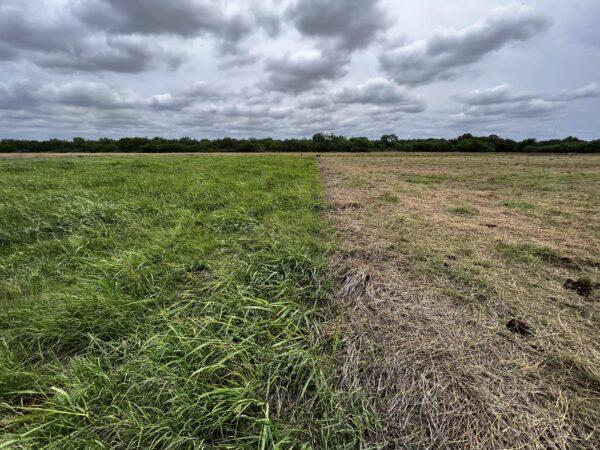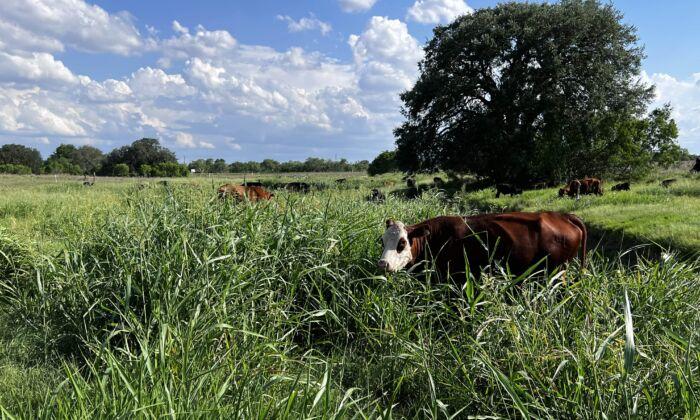Livestock farming has been at the forefront of media and environmentalist attacks for decades. That’s because many researchers insist the United States has reached a tipping point with animal husbandry, citing extended drought conditions as evidence.
Subsequently, livestock farmers have found themselves in a hotbed of environmentalist ire.
The drought crisis has drawn heavy frowns and finger wags from the orthodox scientific community, which points to livestock grazing as a significant part of the problem.
Because for the majority of scientists, there’s a formula: more animals grazing equals worse climate effects, period.
However, advocates of regenerative grazing have been gathering data and coming forward. They’re sharing evidence that shows holistic grazing methods can actually improve soil quality, health, and water retention in grassland ecosystems.
Further, when done correctly, some evidence suggests livestock grazing can even reverse the effects of desertification.
Known as the process through which fertile soil becomes desert, think tanks from nearly every sector have spent years troubleshooting the fast desertification of America’s grasslands.

“We practice regenerative grazing by using ’total grazing' techniques ... geared toward helping the soils and grass grow healthy and quickly,” Eric Honsberger told The Epoch Times.
Honsberger manages a cattle operation at the Hickok Ranch in the pastoral plains of Karnes County, Texas. Originally purchased by the cousin of Western folk hero Wild Bill Hickok in 1878, the ranch has been in the family ever since.
And over the past 144 years, they’ve learned some valuable lessons about cattle.
Honsberger explained that regenerative grazing has proven beneficial in what’s mostly been a bone dry year in Texas. The main difference between the method he employs at Hickok Ranch and traditional grazing, is the end goal.
For most ranchers, grazing is just a method to feed cows. Yet, with the regenerative approach, the added objective is to return as many nutrients to the soil as possible.
“With traditional grazing, cattle graze a large pasture and are allowed to eat whatever they please,” Honsberger said, “The problem with this approach is the natural fertilizers produced by cows are spread out and not absorbed completely into the soil.”
Moreover, with the traditional approach, cows can wander back to areas where the grass and other prairie plants are attempting to recover, hindering growth.
“They [cows] will eat and stomp the grass down while it’s trying to grow back.”
But with the regenerative method, Honsberger said cattle are concentrated into smaller patches using portable electric fencing. Patches for grazing are between three to five acres in size and the cows consume over a three to four hour period before moving to the next designated grazing section.
“Since the concentration of cattle is so dense, they’re more likely to stomp the manure, urine, and uneaten or dead grass back into the soil. This is what’s known as hoof impact.”

Honsberger maintains the “hoof impact” of natural fertilizer eliminates the need for chemicals and allows the grass to grow back quicker and healthier.
While this tweaked approach to livestock grazing may seem simple, it wasn’t so obvious to the world of ranching or environmental science until 2013.
Born in Zimbabwe, Savory watched the vast prairies of his native Africa slowly turn to desert beneath the hooves of animals.
It spurred him to become a rangeland ecologist and develop holistic land management techniques involving animal grazing during the 1960s.
Today, Savory’s institute has 48 global hubs and more than 12,000 farmers trained in his regenerative grazing method. His institute touts over 13 million hectares have benefited from the transition to his land management methods, which mimic patterns used by animals in the wild.
Herd animals in nature tend to graze in dense groups and continue moving as a defense against predators.
And for ranchers like Honsberger, the proof is right beneath his feet.
Back to Mob Grazing Days
Water retention is paramount when it comes to reversing desertification and the effects of drought. Grasslands are an essential part of that process.Largely underrepresented as an ecosystem, nearly a third of the planet’s land—more than 12 billion acres—comprises vast prairie landscapes. And those tall, swaying grasses do a lot more than just feed animals and create picturesque backdrops.
“Deep-rooting perennial grasses are like magic for water retention,” Alex Melvin, the founder of Permacultured, told The Epoch Times.
Melvin’s business focuses on regenerative agriculture and self-sustaining food systems. He explained that, during heavy rainfall, deep rooting native grasses slow water down, preventing excessive runoff. In turn, groundwater also becomes replenished.
“It makes the landscape like a sponge,” Melvin said.
He also agrees with Savory’s method, saying it’s necessary to take cows back to their “mob grazing days.”
Offering the example of how wild bison used to feed on the American Great Plains, Melvin elaborated the near constant rotation used with the holistic approach maximizes photosynthesis for plants by not allowing animals like cows to hunker down in one spot.
“Using livestock in regenerative agriculture is more than throwing a bunch of cows out on a grass field,” he said.
New Approach Vital
United Energy Trading (UET) is working with U.S. communities that want to improve the health of grasslands and sequester carbon through the use of a grazing method called “twice over grazing.”“Twice-over grazing application is critical to the overall preservation and enhancement of grasslands. These techniques lead to better soil health, which is a critical element of the fight against climate change,” Kyle Eichman, vice president of communications and media relations at UET, told The Epoch Times.
Similar to Savory and Honsberger’s approach, twice over grazing allows more time for plant regrowth in between animal consumption.
Eichman notes this new approach is vital since the biggest threats to grasslands are drought and overgrazing. He said given the massive scale of the Great Northern Plains, U.S. grasslands play a critical part in a healthy ecosystem.
“If you also consider the impact the grasslands have on the ranching industry, the ability to feed the U.S. and the world, it becomes even more important,” he said.
Though not everyone is convinced.
Critics of regenerative grazing techniques are holding to their mantra of less meat consumption and less livestock is the only way out of a carbon-methane trap and desertification.
Further, the opposition says evidence that holistic grazing is a miracle breakthrough is anecdotal, with no conclusive advantages shown in the Charter Grazing Trials.
But for those who work up close and personal with animals and the dirt they tread, the evidence is undeniable.
“If cattle are managed to graze correctly, they will help achieve better soil health,” Honsberger said, before adding, “I could go on, but I have a ranch to run.”






Friends Read Free